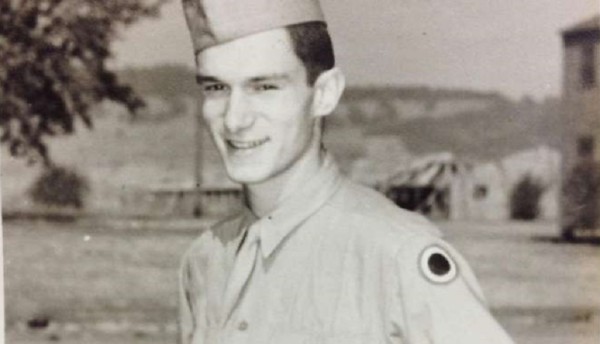

Hugh Hefner, the founder and avatar of Playboy, died of natural causes on Sept. 27 at age 91. With his characteristic smoking jacket, pipe, and bevy of Playboy Bunnies at his side, Hefner became a controversial pop culture icon who built a publishing and entertainment empire which put conservative views of sex and sexuality that defined America in the 1950’s squarely in its crosshairs.
But long before Hefner helped redefine the benchmarks of social status for men — replacing the domesticity of lawnmowers and white-picket fences with cocktails, stylish clothes, and a swinging bachelor lifestyle in an all-American mix of sex and materialism — he was a young, wet-behind-the-ears GI preparing for war. And if things had gone differently, Playboy magazine might never have existed.
Born in 1926, the oldest son of conservative Protestant parents, the man who would one day become “Hef” — a self-styled nickname dating back to his adolescence, in a successful attempt to rebrand himself as cool — enlisted in the Army out of Chicago, Illinois, after graduating high school.
Hefner arrived at Fort Sheridan, Illinois in June 1944 and was shuffled along to basic training at Fort Hood, Texas. He was a fair soldier, according to Steven Watts in his 2008 biography Mr. Playboy: Hugh Hefner and the American Dream, earning a Sharpshooter Badge on the range with his M1 Garand and graduating from “Killer College,” as he called it, with an extensive understanding of infantry combat and some anti-tank tactics under his belt.
After some follow-on training as a rifleman at Fort Chaffee in Arkansas, Hefner was ordered to Fort Meade, Maryland to await processing and orders to his unit. A young grunt dropped into the middle of U.S. involvement in World War II, Hefner was all but certain to see front-line service after his training — or so he thought.
Then, Heffer received orders “that changed his Army life enormously,” writes Watts. “He had been assigned to the ‘Chairborne Infantry’ by getting a desk job as a clerk in S-1, or personnel, because of his typing skills. A delighted Hefner appreciated this ‘dandy break’ because, in his words, he liked ‘Washington’s women very much.’”
Because of his duty reassignment as a POG, meaning person other than grunt, Hefner’s “creative vision was allowed to blossom,” notes Susan Gunelius’ 2009 biography Building Brand Value The Playboy Way: “Instead of crossing the ocean with a rifle in hand, he would sit at a desk with a typewriter at his fingertips.”
While stationed at Fort Meade, Hefner made frequent forays into Washington, D.C., regularly attending dances to pick up women or hitting the movie theater, activities which fueled his creative impulses. “He drew numerous cartoons for the Army newspapers and wrote a satirical song titled ‘I’d Make a Hell of a Good Civilian’ that his company sang and marched to,” according to Watts.
Though Hefner was romantically involved with Mildred Williams, his first girlfriend and future wife until their divorce in 1959, he dated other women while stationed in D.C. According to Watts, Hefner’s Army days “‘created this world of romantic adventure’ that saw many casual dates but no serious emotional involvement.”
Even so, Hefner couldn’t escape the fear that at any moment, he might be sent overseas, forced to swap a lascivious lifestyle for the hardship of wartime service as part of the occupying force of Japan. But that never happened, and Hefner’s luck with women seemed to have carried over to his luck in duty assignments. From Maryland, Heffner hopped to Camp Adair near Salem, Oregon, and Fort Pickett, Virginia.
Hefner’s time flirting, carousing, and partying in the Army drew to a close in 1946, when he was honorably discharged as a corporal following the demobilization of the military at the war’s end.
By 1953, Hefner published the first issue of Playboy magazine. The men’s lifestyle magazine quickly became a lightning rod for debate between sexual freedom and sexual oppression, as the New York Times noted. Even as it drew the ire of conservatives and feminists alike, sales had soared to 7 million copies a month by the 1970s, and an empire’s place in American culture appeared set.
Though the long-running critiques of Hefner and Playboy for being vulgar, adolescent and demeaning to women are well documented, it’s worth taking a moment to consider that all those centerfold posters might not have adorned so many barracks walls if it wasn’t for one POG, dancing, flirting, and smoking his pipe stateside during the war. And for that, we salute you, Hugh: Thank you for your service to your country — and for all the “reading material” we benefited from overseas.
